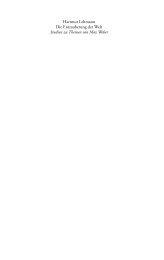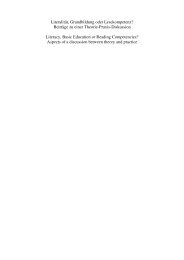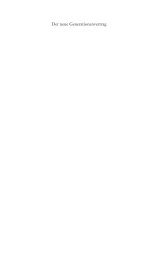The Wow Factor Global research compendium on the ... - E-cademic
The Wow Factor Global research compendium on the ... - E-cademic
The Wow Factor Global research compendium on the ... - E-cademic
You also want an ePaper? Increase the reach of your titles
YUMPU automatically turns print PDFs into web optimized ePapers that Google loves.
oom boundaries to include art and cultural instituti<strong>on</strong>s and be flexible with timetables<br />
and o<strong>the</strong>r structures to allow students to become immersed in <strong>the</strong>ir investigati<strong>on</strong>s.<br />
<str<strong>on</strong>g>The</str<strong>on</strong>g> arts have an enormous part to play in <strong>the</strong> total experience of educati<strong>on</strong> that<br />
students receive. Students develop greatly in terms of risk-taking, c<strong>on</strong>fidence, and<br />
ownership of learning through involvement in <strong>the</strong> arts. <str<strong>on</strong>g>The</str<strong>on</strong>g> arts really are involving;<br />
<strong>the</strong>y promote a sense of community through a shared sprit and encourage student<br />
motivati<strong>on</strong> to learn. Through establishing c<strong>on</strong>necti<strong>on</strong>s with students, <strong>the</strong> arts offer<br />
something unique and intrinsic to <strong>the</strong> quality of educati<strong>on</strong>.<br />
<str<strong>on</strong>g>The</str<strong>on</strong>g> arts directly c<strong>on</strong>tribute to positive self-percepti<strong>on</strong>s and identity, vital to effective<br />
educati<strong>on</strong>al achievement and <strong>the</strong> pursuit of lifel<strong>on</strong>g learning. <str<strong>on</strong>g>The</str<strong>on</strong>g> arts may<br />
assist in developing cultural awareness and <strong>the</strong> acceptance of self and o<strong>the</strong>rs.<br />
Recent technological changes have also sparked c<strong>on</strong>siderable interest in <strong>the</strong> impact<br />
of <strong>the</strong> arts <strong>on</strong> students’ learning in relati<strong>on</strong> to emerging multimodal literacies.<br />
Despite all <strong>the</strong>se claimed benefits of <strong>the</strong> arts, educati<strong>on</strong> m<strong>on</strong>itoring and issues of<br />
quality have still largely c<strong>on</strong>centrated <strong>on</strong> achievement defined by quite limited<br />
noti<strong>on</strong>s of scientific, ma<strong>the</strong>matical or technological thinking and <strong>the</strong> cultural<br />
dimensi<strong>on</strong> of educati<strong>on</strong> has been largely overlooked. This problem is compounded<br />
by a lack of sustained evidence of <strong>the</strong> benefits of arts-rich programmes <strong>on</strong> educati<strong>on</strong>al<br />
outcomes and definiti<strong>on</strong>al problems associated with <strong>the</strong> scope and nature<br />
of arts educati<strong>on</strong> as it is operates within schools.<br />
Arts educati<strong>on</strong> involves<br />
<str<strong>on</strong>g>The</str<strong>on</strong>g> term ‘arts’ is used to denote both instructi<strong>on</strong> in <strong>the</strong> arts and artistic pedagogy<br />
used to instigate educati<strong>on</strong>. Richards<strong>on</strong> (1999: 25) defines <strong>the</strong> arts broadly and<br />
simply as being anything made by humans. Embedded within this definiti<strong>on</strong> are a<br />
number of assumpti<strong>on</strong>s. Richards<strong>on</strong> c<strong>on</strong>tends that <strong>the</strong> arts involve skills in creating<br />
something that is beautiful and/or moving in its form. He c<strong>on</strong>siders that <strong>the</strong> arts are<br />
c<strong>on</strong>structed and sited within a cultural c<strong>on</strong>text. Definiti<strong>on</strong>s of <strong>the</strong> arts c<strong>on</strong>tinue to<br />
be <strong>the</strong> subject of entire <strong>the</strong>ories, and it is not <strong>the</strong> intenti<strong>on</strong> of this book to add to that<br />
extensive body of work. <str<strong>on</strong>g>The</str<strong>on</strong>g>re is c<strong>on</strong>siderable questi<strong>on</strong>ing over whe<strong>the</strong>r a term<br />
such as <strong>the</strong> arts – with <strong>the</strong> ‘s’ – is even an appropriate way to group disciplines<br />
whose paramount forms can be as diverse as portraiture, orchestra, ballet and Greek<br />
tragedy. Yet <strong>the</strong> dominant political and educati<strong>on</strong>al discourses widely use <strong>the</strong> term<br />
‘<strong>the</strong> arts’ and embed within this term an assumpti<strong>on</strong> of unity underpinned by<br />
noti<strong>on</strong>s of culture, heritage, citizenship and creativity.<br />
20

















